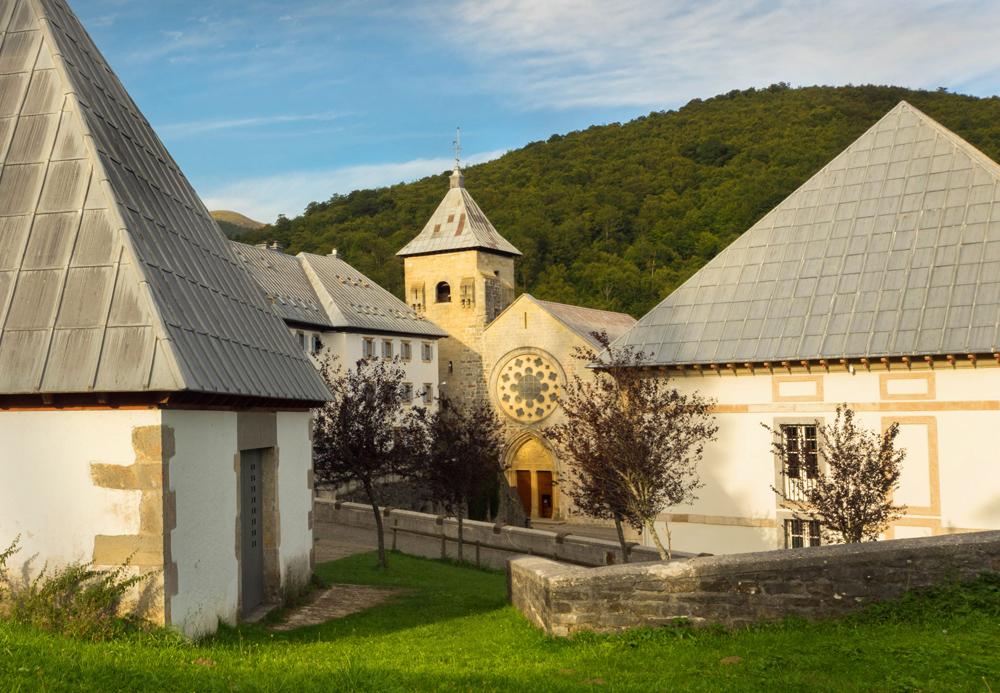Pilgrims coming from Saint-Jean-Pied-de-Port finally catch sight of Orreaga/Roncesvalles. The end of the stage, the prospect of rest.
And what a prospect!
To arrive at the Collegiate Church of Orreaga/Roncesvalles is to arrive at a place brimming with significance for those making their way to Santiago. For some, because it is the beginning of their adventure, the first stage of their journey to Galicia, and for others, because it feels that the apostle is closer than ever when they enter Spain.
And all that emotion is palpable. Right from the start.
Whether you’re doing the route on foot or on wheels; whatever your beliefs. This is a setting — born of history and legend — which is bound to captivate you, whoever you are.
Putting it into words is not easy. But we’re willing to give it a go.
Why Roncesvalles is so fascinating
-
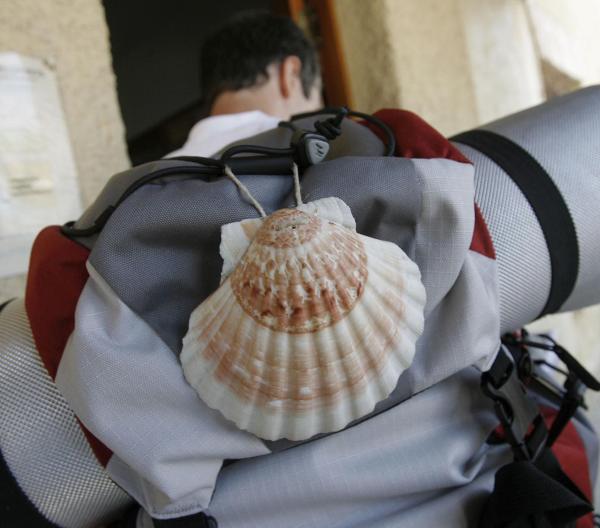 A unique location for pilgrims
A unique location for pilgrims
A unique location for pilgrims
-
.jpg) A prime example of French Gothic architecture
A prime example of French Gothic architecture
A prime example of French Gothic architecture
-
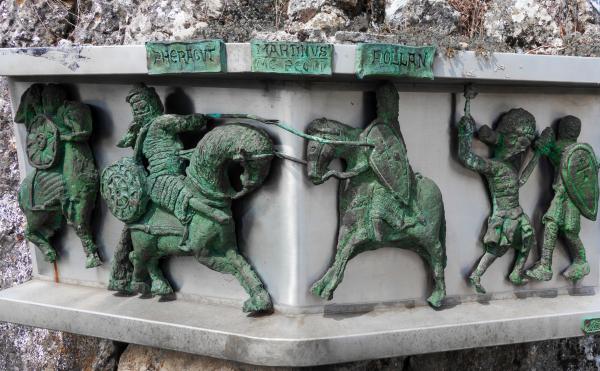 The site of legendary battles
The site of legendary battles
The site of legendary battles
Orreaga/Roncesvalles
What is so special about this place that thousands of people visit each year, lost, as it is, in the Navarrese Pyrenees, in a village of 20 inhabitants that time seems to have forgotten?
Maybe that’s part of its charm. The abundance of grass, the sound of cowbells and the fog and zirimiri (drizzle) give it that mystique we find so appealing.
All that and the mythical defeat of Charlemagne, the treasures of a rich artistic heritage and, of course, everything that comes with being the Gateway to the Way of St James in Spain.
But if we had to choose two words to define Orreaga / Roncesvalles, they would be culture and landscape.
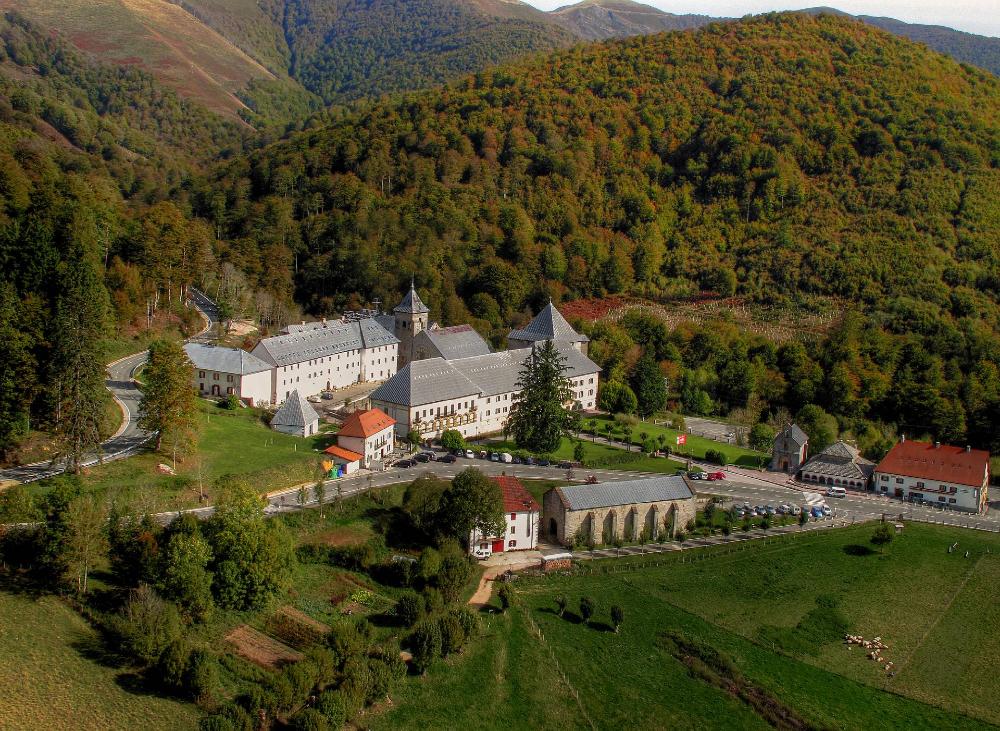
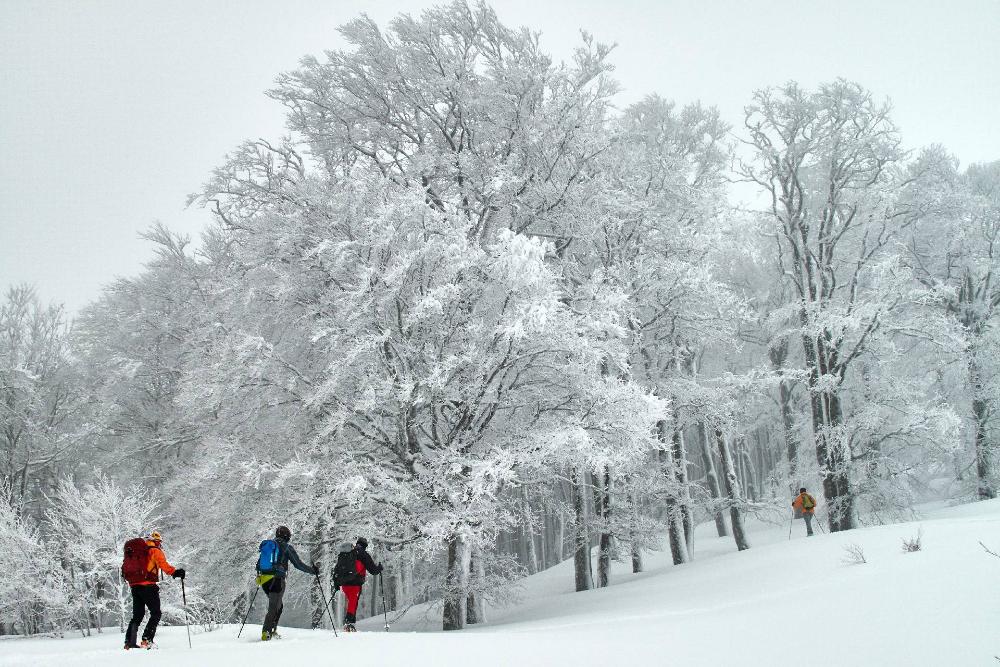
Fusion of culture and landscape
The architectural ensemble is captivating due to the balance it strikes, blending perfectly into its surroundings.
Wherever you look, there’s green.
If you walk around the buildings, you’ll see gentle Pyrenean mountains standing more than 1,000 metres high, like Lindus, Ortzanzurieta and Ibañeta, all offering amazing views. You can reach the last of the three by car.
And if you’re into rambling, there are oak and beech woods all around, with beautiful trails to explore. Ask at the Tourist Information Office and they’ll give you all the details.
That said, it’s time for the star attraction. One of the best known and most loved places in Navarre. We bring you:
The Collegiate Church of Santa María de Orreaga/Roncesvalles
We don’t want to bog you down in all the historical details that you can find on your own if you’re interested; so we’ll just point out two key facts so you know the basics, if you don’t already:
- The origin of the collegiate church dates back to the beginning of the 12th century, when Alfonso the Battler and the Bishop of Pamplona ordered the construction of a monastery-hospital on the Ibañeta Pass to attend to pilgrims. A few years later, the hospital was moved to its present location.
- It was the Kings of Navarre Garcia V Ramirez, Sancho the Wise and Sancho the Strong, whose consecutive reigns lasted from 1134 to 1234, that truly developed the site. Sancho the Strong had the collegiate church built, and there lie his remains.
And there you are. Enough! It’s best to find out about the rest of the site’s history when you get here.
And what will you find at the Collegiate Church of Orreaga/Roncesvalles?
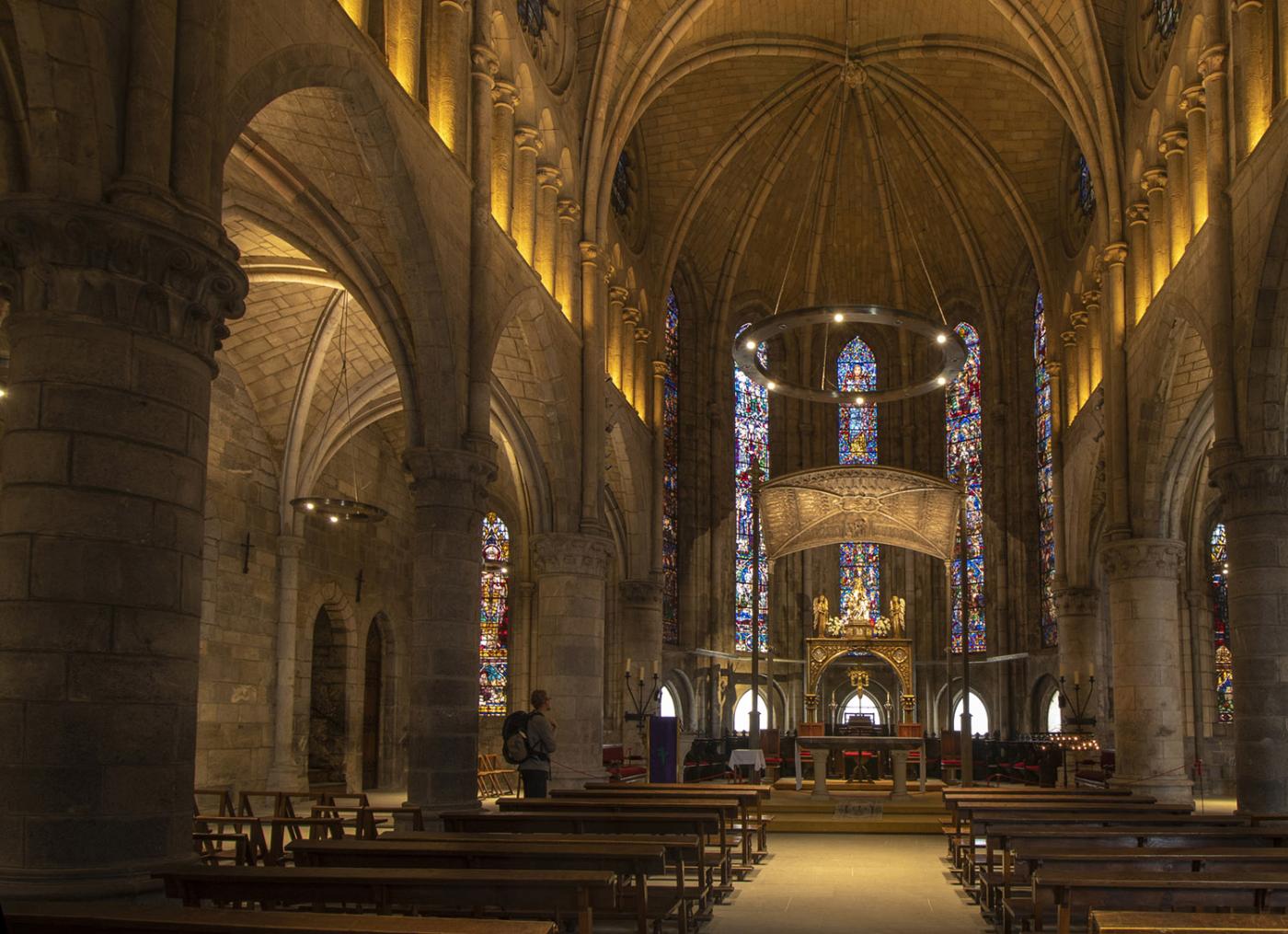
-
.jpg)
The Church of Santa María
As already stated, this church is Gothic splendour at its utmost.
With an exquisite carving of the Virgin who they say is sweet, delicate and can all but talk. With light filtering through stained-glass windows that almost has you levitating. And with the resonance projected by a vault that amazes all that behold it.
You can enter whenever you like; entry is free all day until the pilgrims’ mass.
-
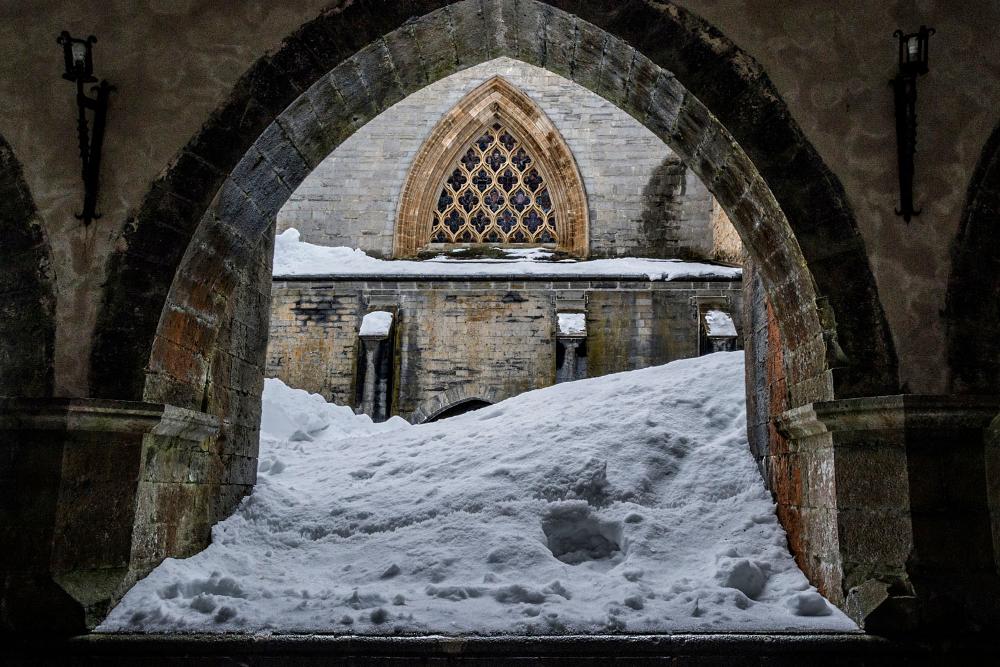
The Gothic cloister and chapter house
A cloister which is striking as it is, but if you see it after it has snowed, then you are in for an aesthetic delight.
The chapter house, which houses the chains of Navarre and the mausoleum of Sancho the Strong, so called because he was 2.25 metres tall.
-

The Chapel of Santiago
A small early Gothic temple (13th century) whose bell is said to have guided pilgrims in fog and storms.
-

Charlemagne’s silo
This 12th-century Romanesque building is said to be the burial site of the twelve peers of France, knights and nephews of Charlemagne who died alongside Roland at the Battle of Roncevalles in 778.
-
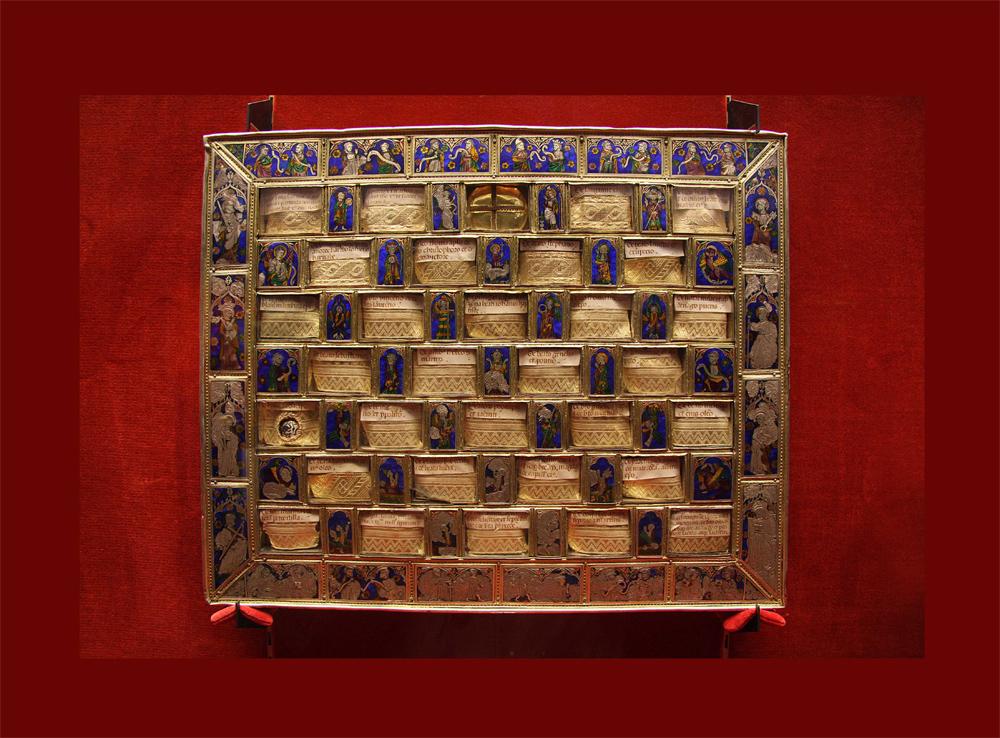
The Orreaga/Roncesvalles Museum
With exhibits of great value, such as Charlemagne’s chessboard and Miramamolin’s emerald.
Legend has it that Charlemagne was playing on the board when the news of the death of his nephew Roland at the Battle of Roncesvalles reached him.
And Miramamolin is said to have worn the emerald on his turban at the Battle of Las Navas de Tolosa in 1212. Sancho the Strong claimed it as part of his spoils, and, together with the chains, it has featured on the coat of arms of Navarre ever since.
-
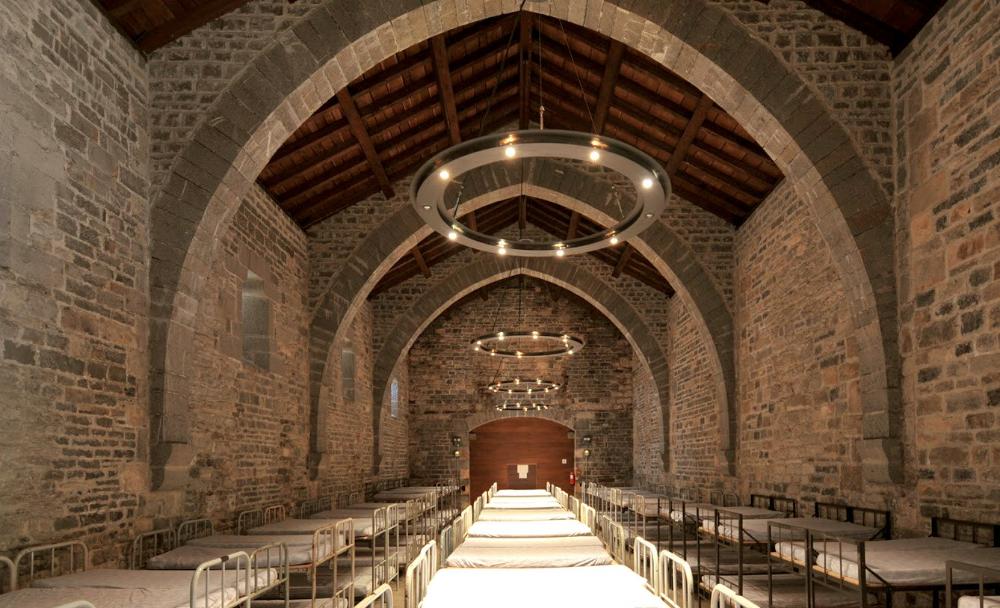
Itzandegia
The complex also includes Itzandegia, a mediaeval building — the old pilgrims’ hospital —, now a multipurpose hall.
The tour of Roncesvalles highlights the harsh conditions in which the local inhabitants lived, the role of the religious community in protecting pilgrims and the site’s historical importance through the relics in the museum.
A tour in which stories inhabit every room, envelop every work of art. Stories of heroic deeds, of loss, faith and hope.
Wouldn’t you like to hear them?
Map of Orreaga/Roncesvalles
Locate the monuments on a map
Rambling near Orreaga/Roncesvalles
We don’t want to finish without talking about some of the options you have in the area to round off a first-rate day at the collegiate church.
If you come with the idea of walking in the countryside in mind, these are some of the routes with the best landscapes in the area:
-
The canons’ path: this was the only walk that the canons used to be allowed to take beyond the walls of the collegiate church complex. It offers a beautiful view of the buildings, passes the Roland spring, where legend says the knight was wounded, and the spring of the Virgin, where shepherds found the carving of the Virgin of Roncesvalles.
-
The Woods of Basajaunberro: an easy circular route which takes just over an hour, perfect for all the family. Part of the collegiate church complex with its beech and oak trees does nothing but add magic to the setting where akelarres (witches’ covens) are said to have been held. The last stretch is the Way of St James but in the other direction. See the route on wikiloc.
-
Sections of the Way of St James: and why not do them in reverse? It’s the best way to go up to the Ibañeta Pass and enjoy the stunning panorama of the collegiate church. Another equally good option is to go to Auritz/Burguete and walk back again.
-
The Burguete bunkers route: this will take you back to the tumultuous 20th century. Following the stretch of border bound by the Pyrenean peaks, 3 marked trails reveal the remains of the fortified line, the plans for which got under way during the Spanish Civil War. See the routes here.
And if you want to visit the nearby villages, we recommend going to see Auritz/Burguete or Aurizberri/Espinal — beautiful examples of linear villages. There you will find cemeteries with funeral steles, green landscapes and Navarrese Pyrenean architecture.
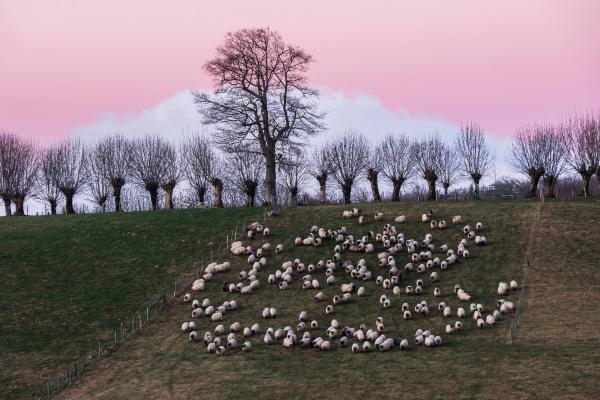
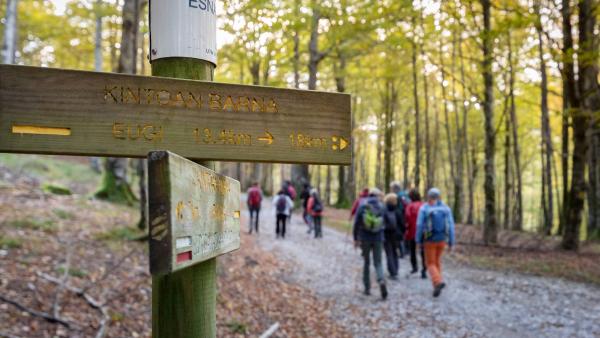
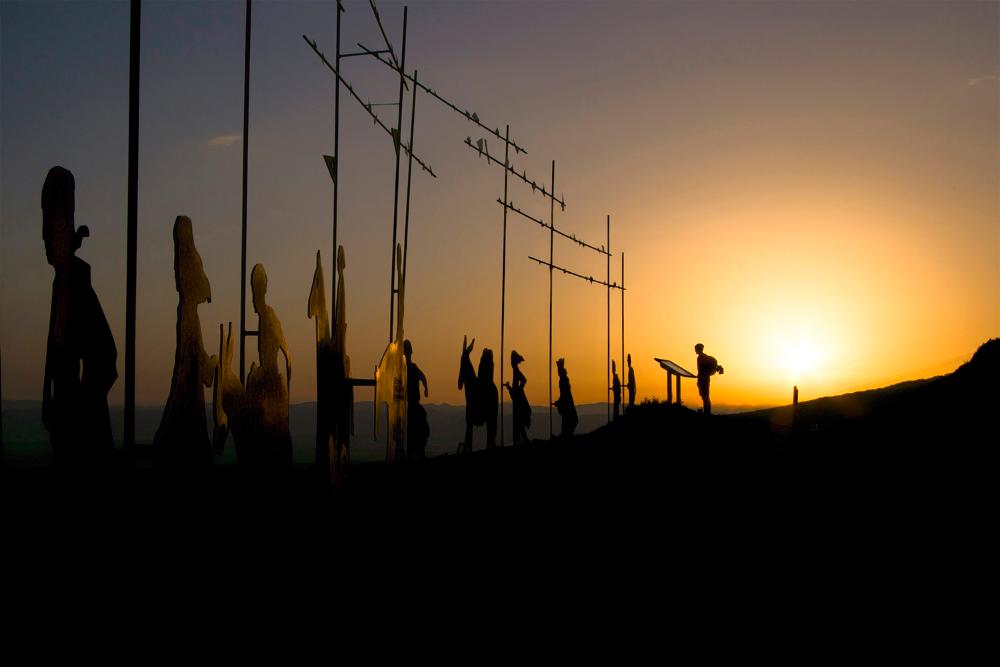
Start the Way of St James in Orreaga/Roncesvalles
And speaking of paths, here starts one of the most ancestral and authentic ones you can find, the Way of St James.
The four routes of the French Way, which start at different points in Europe, join paths in the French town of Jean-Pied-de-Port, 27 kilometres from Orreaga/Roncesvalles, which is why most pilgrims choose this Navarrese locality to start their adventure.
780 kilometres that will fill your backpack with great memories await before you reach Santiago de Compostela. Go on foot, by bike, on horseback, sleeping in hostels or hotels, carrying your belongings or travelling light because it’s been sent on.
However you choose, but do it! You won’t regret it.
Come on, you're up for it, aren't you?
As you can see, visiting Orreaga/Roncesvalles is a perfect way to spend a day.
Discover the secrets of this icon on the French route of the Way of St James, walk through beech and oak woods, try some Pyrenean cuisine — migas de pastor (shepherds’ breadcrumbs), scrambled eggs with perretxikos (wild mushrooms), trout with ham, wild boar stew, pigeon, junket, yum-yum. And if you really want to make the most of everything, why not spend the night at a hotel, hostel or house for rent in one of the local villages?
It's a perfect plan.


